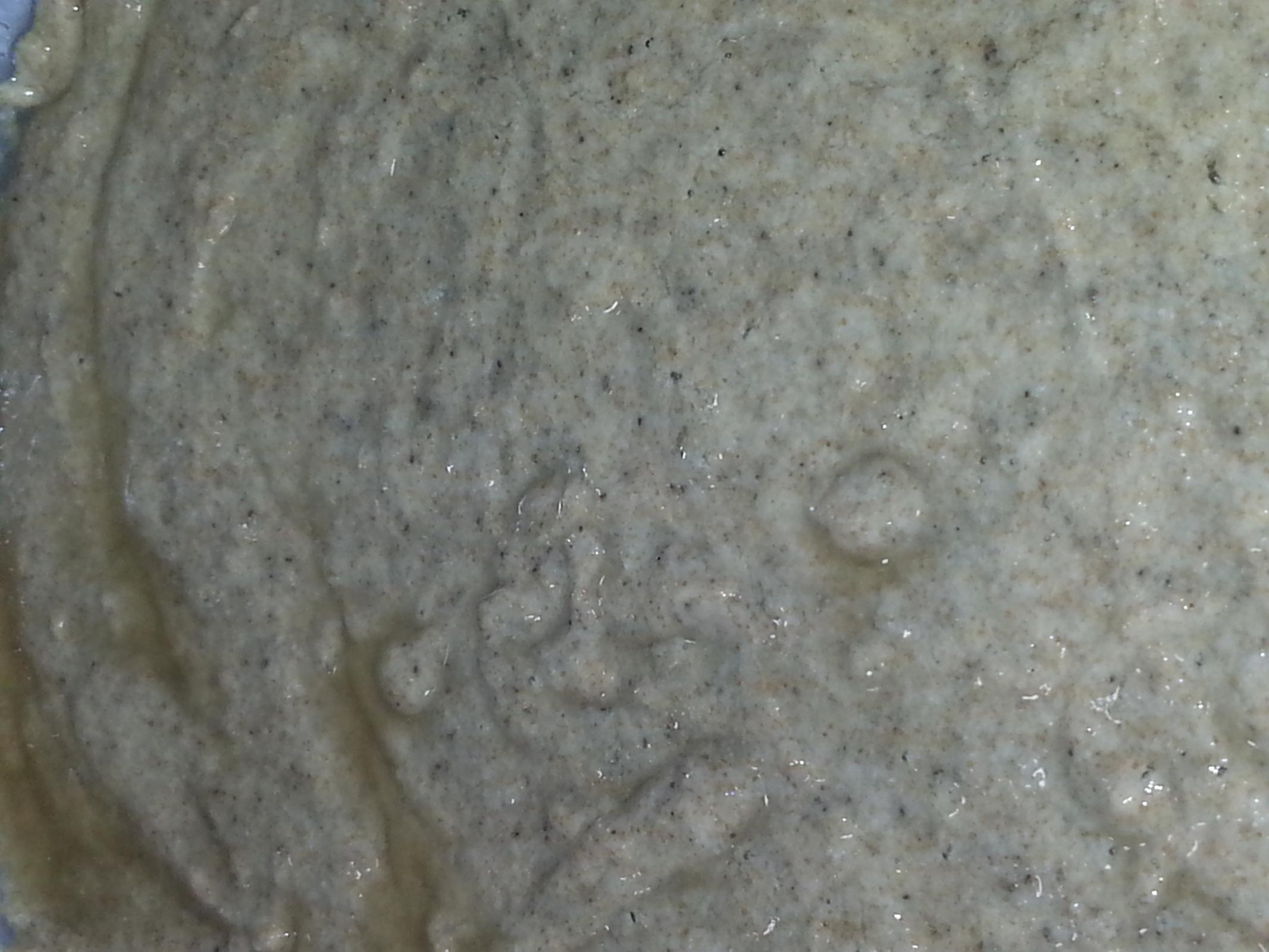
Abnormal black dots on the surface of my half-day old sour dough starter

hello,
My half-day old sour dough starter seems to have developed some black dots on its surface (as shown in the attached picture). I can't tell if this is any bacteria developing or if this naturally occurring. Would the flour be a factor ? like since I used 100% whole wheat, which is brown rather than purely white, the black colour could be something that naturally comes with the whole wheat?. Can some expert shed some light on this, thank you!!
My another question is: can I use sourdough starter for a no knead, long refrigerated cool rise in a large batch (say 1kg lasting 7 days), freeze the unused portions in a freezer and defrost the frozen sourdough in the fridge over night before 2nd proofing? I used this method for my bread prepared with commercial yeast: the dough is not kneaded, just allowed to cool rise (actually gluten development) in the fridge for 8 hours or so before freezing, I then transfer what I need to eat the next day to the fridge 24 hours before second proofing and baking, and the outcome turned out quite good.
Cheers
Liming


oh I forgot to mention that my another 3 sourdough starter never had this issue, although they were both prepared using whole wheat flour.
liming
Why are you going through the process each time? You keep one starter going and from that you can build pre-ferments to go into breads. You can also take some starter to build another starter with a different flour in no time at all.
Black dots? Well wholewheat has bran in it so could be that.
thanks for your reply! maybe I didn't describe my way very clearly. I usually prepare a big batch of dough that can last 7 days with commercial yeast. what I did was to let the batch have a cool rise in the fridge for 8 hours and then freeze them in the freezer. I only take out the portion to bake 24 hours before, and let it defrost in the fridge until I shape them on the counter and do second proofing.
So since I have always been doing it with commercial yeast, what I'm worried about is whether I can do this with sourdough starter as well.
Cheers
Liming
As I have never done it myself. One can make a dough and keep it in the fridge then take it out a day later to shape, final proof and bake. But for what maximum time one may do this i'm don't know. I regularly do 12 hours but never for one week nor have I ever frozen a dough.
papier-mâché ....sure ya didn't grind up the morning paper? Charcoal bits? Can you dig out a spot and blow up the photo? :)
Mites or other small insects (do any of the spots move under their own power?)
Fragments of non-grain material (source could be anything from seeds to dirt to paint to insects to ?????)
Bran is a possibility, I suppose, but the color doesn't look like bran.
Are similar black dots present in the dry flour?
Does a magnifying glass give a you a better view of the dots? Are they similar in shape and size, or random?
If you dig under the surface of the starter, are the dots visible throughout the flour/water mass?
Paul
hi paul, thank you for your comprehensive diagnosis! now my starter is in its 2nd day and all black dots have disappeared. plus, its stinky smell is not as bad as my another starter if i compare their smell at the same stage, and i attribute to sanitizing the container with boiled water for longer time.
thanks!
limoing
This thread is a little old, but I had a similar occurrence with my starter this week. Coincidentally and luckily for me, the day following my splitting my starter into two batches and feeding the original with ap flour as always, and feeding the new, offshoot starter with a half ap, half milled-it-myself flour, the original starter, at the end of its feeding cycle, developed the dreaded black spots on top. The new, split-off starter was both pristine and performing much better.
A local pizzeria owner's dough rounds always exhibit black dots, which he says are dead yeast colonies.
Another website, mightypizzaoven.com, weighed in with this opinion about black-dot starter:
I don't think I "contaminated" my starter, but who knows? Anyway, I was lucky to have the new starter and so I discarded the suspect one. It seems like yeast cells would just go dormant, long before they died and turned black. It's bothersome, and I hope someone comes up with a definitive reason for this. This is a good puzzle for the microbiologists.
I'd like to see some of those spots under a microscope. Dead yeast cell membranes from dormant yeast spores? Is that even possible?